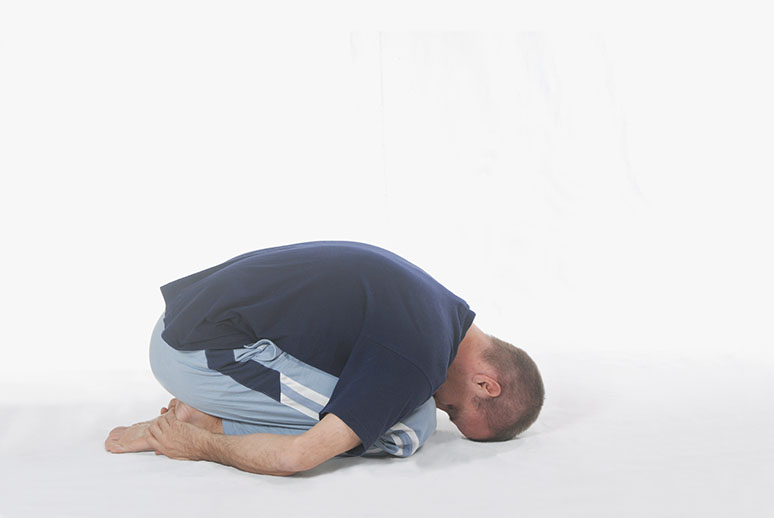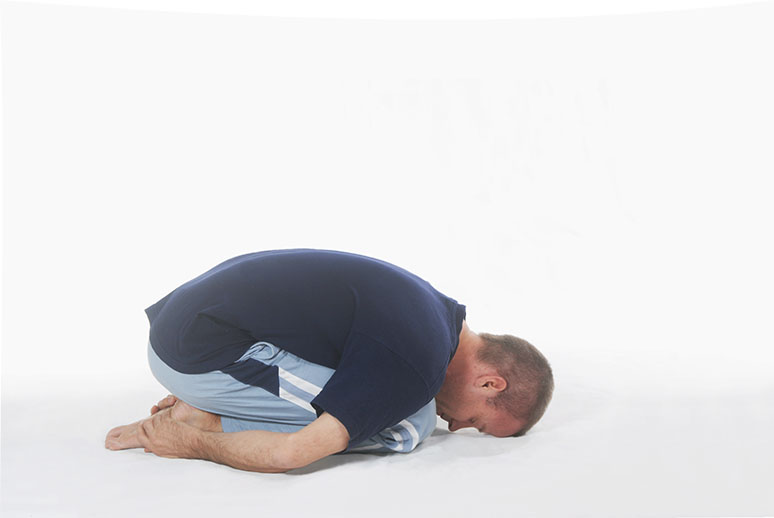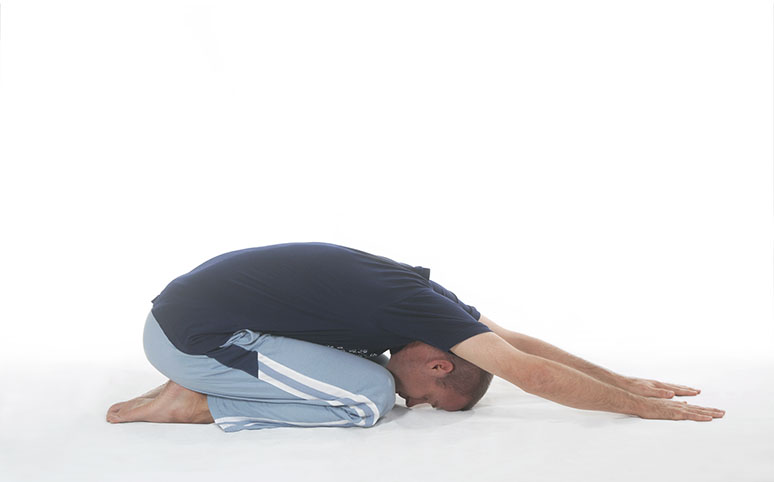[ Excerpt from The Science of Yoga, page 253 ]
Dharmika asana is known as the "devotional pose." It is also sometimes referred to as shashanga asana. Shasha is the Sanskrit word that means "crouch," and anga means "limb." Therefore this can also be called the "crouched (with limbs) pose."
his posture is an excellent position for light relaxation and relief of tension. It is therefore a good position for performing certain visualization and relaxation techniques such as those that you will be introduced to shortly.
Technique
- From the starting position of vajra asana, exhale and slowly lower your forehead down to the floor.
- Draw your nose into the space between your knees, stretching the back of the neck so that the point of contact of your head with the floor is around the hair-line (or where a normal hair-line should be) or slightly higher.
- Relax your arms to the sides and place your palms on top of the soles of your feet.
- To come out of the pose, first straighten your head and neck, and then slowly return to vajra asana as you inhale.
Variations
Ardha Shashanga Asana - This position is performed in the exact same manner as dharmika asana, although the head and neck are maintained in a more relaxed position, with the middle of the forehead resting upon the floor.
This is more of a position for light relaxation, and thus it is not necessary for the hands to be in contact with the feet here. The palms may be turned up or down along side of the feet.
Purna Shashanga Asana - From either the ardha shashanga position, or dharmika asana, slide the palms along the floor and stretch your arms forward. Perform deep breathing in this position. This is a great pose to follow any of the inversion asanas, where the head is below the hips and feet.
Effects and Benefits
Dharmika asana is a great position for the relief of tension. It can be used alone, when you need to relax, or it is a good practice to follow any strenuous movements or yogic practices. As mentioned, it is a good position to follow the inversions such as sarvanga asana (shoulder stand) and shirsha asana (head stand), as it helps to calm the nervous system and equalize the blood pressure.
This posture helps to relieve sinus headache and is even helpful for migraine sufferers. It provides relief from nausea and dizziness, motion sickness or any form of vertigo.
The spinal cord is drawn under tension within this position, thereby relieving pressure of the cerebral spinal fluid which surrounds the spinal cord and brain, leading to a calming of the nervous system and a very relaxed state.
[Continued...]
---------------------
NOTE: This yoga article is an excerpt from The Science of Yoga, an online yoga training program with streaming yoga videos and 600 pages of step-by-step yoga instruction.

"The Science of Yoga is a course worthy of
leather binding and an honored place in the
finest libraries in the world
... It is indeed a masterful work."
Dr. John Michael Christian
AwakeningWithYoga.com
Learn More About
The Science of Yoga Course
|









